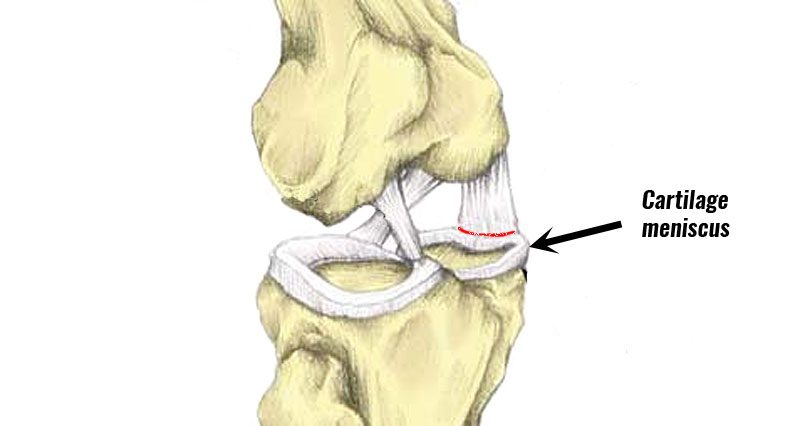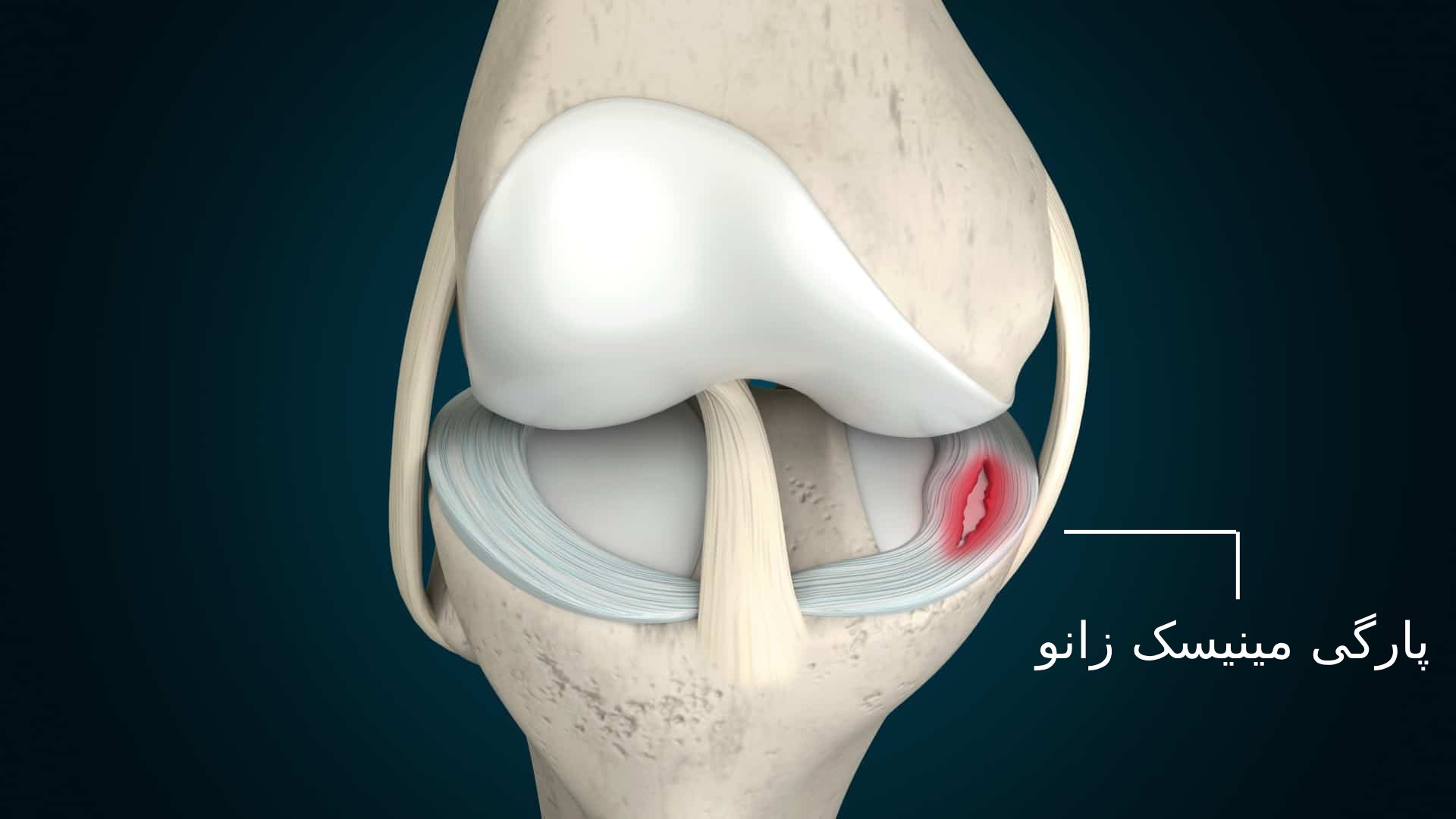Understanding Torn Meniscus

The meniscus, a C-shaped piece of cartilage in the knee joint, plays a crucial role in cushioning and stabilizing the joint. A torn meniscus occurs when this cartilage is damaged, often due to a sudden twisting or impact. This condition can cause pain, swelling, and stiffness in the knee, significantly affecting mobility.
Anatomy and Function of the Meniscus
The meniscus is a crescent-shaped piece of cartilage that acts as a shock absorber and helps distribute weight evenly across the knee joint. There are two menisci in each knee: the medial meniscus on the inner side and the lateral meniscus on the outer side. These cartilaginous structures provide stability and lubrication to the knee joint, enabling smooth movement and reducing friction between the bones.
Types of Meniscus Tears
Meniscus tears can vary in severity and location. Common types of tears include:
- Horizontal tear: This type of tear occurs across the width of the meniscus.
- Vertical tear: This tear runs lengthwise along the meniscus.
- Radial tear: This tear is a combination of horizontal and vertical tears, creating a radial pattern.
- Bucket-handle tear: This is a large, vertical tear that can detach a significant portion of the meniscus, resembling a bucket handle.
Common Causes of Meniscus Tears
Meniscus tears often occur due to:
- Sports injuries: Activities involving sudden twisting or pivoting movements, such as football, basketball, and skiing, are common culprits.
- Direct impact: A direct blow to the knee, such as a fall or a car accident, can cause a meniscus tear.
- Degenerative changes: As we age, the meniscus can wear down and become more prone to tearing.
- Obesity: Excess weight puts additional stress on the knee joint, increasing the risk of meniscus tears.
Prevalence of Torn Meniscus
Meniscus tears are a common knee injury, affecting people of all ages. The incidence of meniscus tears is estimated to be around 70 per 100,000 people per year. Meniscus tears are more common in athletes and individuals with degenerative joint changes.
Symptoms and Diagnosis

A torn meniscus, a common knee injury, can cause a range of symptoms, from mild discomfort to severe pain and instability. Understanding these symptoms and the diagnostic process is crucial for accurate diagnosis and appropriate treatment.
Symptoms of a Torn Meniscus
The symptoms of a torn meniscus can vary depending on the severity and location of the tear. However, common symptoms include:
- Pain: A sharp, sudden pain in the knee, often during a twisting or pivoting motion. This pain may be localized to a specific area of the knee or radiate down the leg.
- Swelling: Swelling around the knee joint is a common symptom, particularly after an injury. The swelling may be gradual or sudden, and it can make the knee feel stiff and difficult to move.
- Clicking or Popping: Some individuals may hear or feel a clicking or popping sensation in the knee, particularly when bending or straightening the leg.
- Locking or Catching: A torn meniscus can cause the knee to lock or catch, making it difficult to fully extend or bend the leg.
- Instability: The knee may feel unstable or give way, particularly during activities that require twisting or pivoting movements.
- Limited Range of Motion: A torn meniscus can restrict the knee’s range of motion, making it difficult to bend or straighten the leg completely.
Diagnosing a Torn Meniscus
A comprehensive assessment is essential for accurately diagnosing a torn meniscus. This typically involves a combination of:
- Physical Examination: A thorough physical examination by a healthcare professional will assess the knee’s range of motion, stability, and tenderness. The doctor may perform specific tests, such as the McMurray test, to check for a torn meniscus.
- Imaging Tests: Imaging tests, such as X-rays, MRI, and ultrasound, can provide detailed images of the knee joint and help confirm the presence of a tear.
- X-rays: X-rays can rule out other causes of knee pain, such as fractures, but they may not always reveal a torn meniscus.
- MRI: An MRI is the most sensitive imaging test for diagnosing a torn meniscus. It provides detailed images of the soft tissues, including the meniscus, and can help determine the severity and location of the tear.
- Ultrasound: Ultrasound is a less common imaging test for diagnosing a torn meniscus. It can be used to visualize the meniscus and surrounding structures but may not be as detailed as an MRI.
Torn Meniscus vs. Other Knee Injuries
| Feature | Torn Meniscus | Other Knee Injuries |
|---|---|---|
| Pain | Sharp, sudden pain, often during twisting or pivoting | Pain can vary depending on the injury, but may be more gradual or diffuse |
| Swelling | Common, may be gradual or sudden | May be present, but not always a primary symptom |
| Clicking/Popping | May be present, particularly when bending or straightening the leg | May be present with other knee injuries |
| Locking/Catching | Can cause the knee to lock or catch | Less common with other knee injuries |
| Instability | May feel unstable or give way | May be present with other ligament injuries |
| Imaging Tests | MRI is the most sensitive test | X-rays and other imaging tests may be used depending on the suspected injury |
Treatment Options: Torn Meniscus

A torn meniscus can be treated with both non-surgical and surgical approaches. The best treatment option depends on the severity of the tear, the individual’s age, activity level, and overall health.
Non-Surgical Treatment
Non-surgical treatment options for a torn meniscus are often the first line of defense, especially for minor tears. These options aim to reduce pain, swelling, and inflammation, allowing the meniscus to heal naturally.
- RICE (Rest, Ice, Compression, Elevation): This is a common treatment for many injuries, including a torn meniscus. It helps reduce pain and inflammation.
- Over-the-counter pain relievers: Medications like ibuprofen or naproxen can help manage pain and reduce inflammation.
- Physical therapy: A physical therapist can teach exercises to strengthen the muscles surrounding the knee, improve range of motion, and help regain stability.
- Bracing: A knee brace can provide support and stability, reducing stress on the injured meniscus.
- Corticosteroid injections: In some cases, a doctor may inject corticosteroids into the knee joint to reduce inflammation and pain.
Surgical Treatment
Surgical treatment is typically considered when non-surgical options fail to provide relief or when the tear is severe. Surgery aims to repair or remove the damaged portion of the meniscus.
- Arthroscopic surgery: This minimally invasive procedure is commonly used to repair or remove a torn meniscus. A small incision is made in the knee, and a small camera and surgical instruments are inserted to visualize and repair the tear.
Benefits and Risks of Treatment Options
Each treatment option has its own set of benefits and risks.
Non-Surgical Treatment
- Benefits: Non-surgical treatment options are generally less invasive and have a quicker recovery time than surgery. They also carry a lower risk of complications.
- Risks: Non-surgical treatment may not be effective for all tears, and the pain and symptoms may persist. In some cases, the tear may worsen without surgery.
Surgical Treatment
- Benefits: Surgery can effectively repair or remove the damaged portion of the meniscus, relieving pain and restoring function. It can also prevent further damage to the knee joint.
- Risks: Surgery carries a higher risk of complications, such as infection, bleeding, and stiffness. It also has a longer recovery time than non-surgical treatment.
Rehabilitation Exercises for a Torn Meniscus
Rehabilitation after a torn meniscus is crucial for regaining strength, flexibility, and stability in the knee. Exercises should be tailored to the individual’s needs and progress.
- Quadriceps strengthening exercises: These exercises strengthen the muscles on the front of the thigh, which help extend the knee. Examples include straight leg raises and knee extensions.
- Hamstring strengthening exercises: These exercises strengthen the muscles on the back of the thigh, which help bend the knee. Examples include hamstring curls and leg curls.
- Calf strengthening exercises: These exercises strengthen the muscles in the calf, which help with ankle stability. Examples include calf raises and heel raises.
- Range of motion exercises: These exercises help improve the flexibility and movement of the knee joint. Examples include knee flexion and extension exercises.
- Balance exercises: These exercises help improve balance and coordination. Examples include standing on one leg and single-leg squats.
Types of Surgical Procedures for a Torn Meniscus
There are different types of surgical procedures used to repair or remove a torn meniscus, each with its own advantages and disadvantages.
| Procedure | Description | Advantages | Disadvantages |
|---|---|---|---|
| Meniscectomy | Partial or complete removal of the torn meniscus | Quick recovery time, minimal risk of complications | May increase risk of osteoarthritis in the future |
| Meniscus Repair | Suturing the torn meniscus back together | Preserves the meniscus, may reduce risk of osteoarthritis | Longer recovery time, higher risk of complications |
A torn meniscus can be a debilitating injury, especially for athletes. Imagine the pain and frustration of having to sit on the sidelines, watching your teammates compete. That’s the reality for many, including Justin Jefferson , who’s experienced the setback of a torn meniscus.
Fortunately, with proper treatment and rehabilitation, athletes can often return to the field stronger than before, ready to conquer any challenge.
A torn meniscus is a common injury that can affect your mobility and quality of life. This tear can occur due to a sudden twisting motion or a direct impact to the knee. While surgery is sometimes necessary, many individuals can recover through non-surgical methods.
Understanding the healing process and proper rehabilitation is key to restoring function and preventing future complications. Check out this comprehensive guide on meniscus tear recovery for insights into the various treatment options and strategies for a successful return to activity.
The information provided can help you make informed decisions about your recovery and get back on your feet faster.
